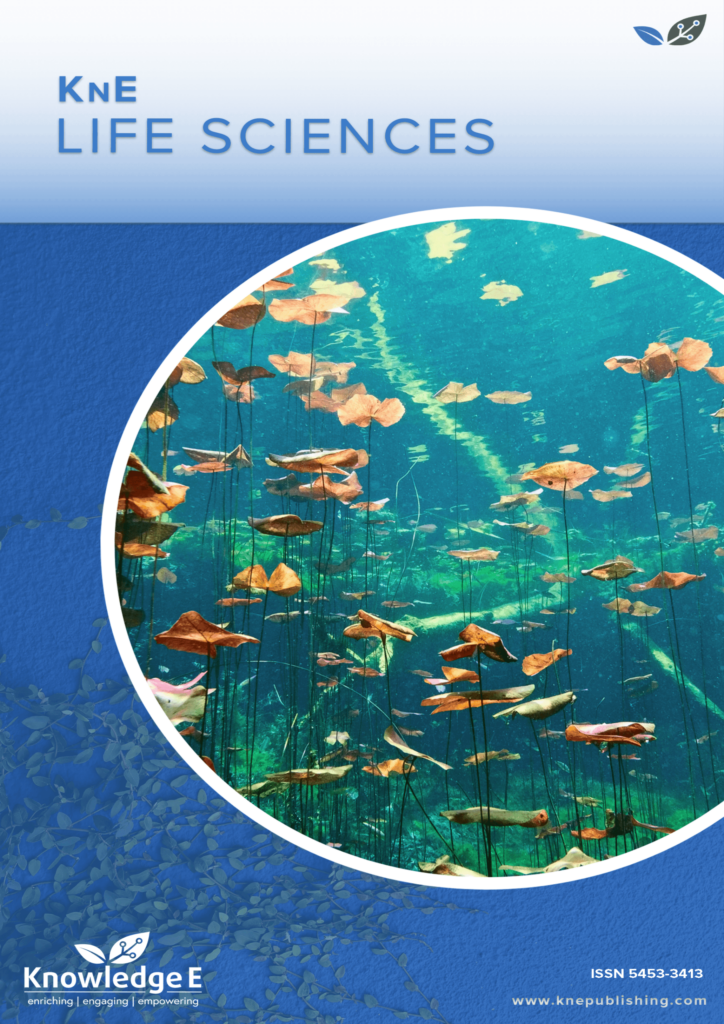
KnE Life Sciences
ISSN: 2413-0877
The latest conference proceedings on life sciences, medicine and pharmacology.
Selecting Fish Combination of Polyculture to Reduce Periphyton Abundance in Floating Net Cage in Cirata Reservoir, West Java, Indonesia
Published date: Nov 26 2017
Journal Title: KnE Life Sciences
Issue title: 2nd International Conference on Sustainable Agriculture and Food Security: A Comprehensive Approach (ICSAFS)
Pages: 136-145
Authors:
Abstract:
Being a considerable potential area for aquaculture activities in the form of floating net cage, reservoir has taken on issues due to its characteristics as a common property with an open access. The problems have led to the vast growing and uncontrolled number of the net cages; one of which occurs in Cirata Reservoir. The objective of this research was to find the best combination of fishes in polyculture at Floating net cage in order to reduce periphyton abundance and to increase aquaculture productivity in Cirata Reservoir. The research has been conducted from February to March 2015. The research method used completely randomized design with three treatments and three replications. The treatments consist of fish combination of tilapia with silver barb, carp with silver barb, and black pacu with silver barb which were cultured for five weeks in floating net cage size (1 x 1 x 1) m3. The individual fish weight were approximately 10 g for tilapia, carp and silver barb, and approximately 4 g for black pacu. stocking density were 80 fishes per unit cage (40 fishes for each species) . The combination of black pacu and silver barb produced highest productivity of 459.77 gr / m3 or 82 % during five weeks. Meanwhile, combination of carp and silver barb gave lowest periphyton abundance of 28 345 cells / cm2. It can be concluded that black pacu and silver barb is the best combination due to growth rate and aquaculture productivity but not in periphyton abundance.
Keywords: Polyculture, Cirata reservoir, Cageculture.
References:
[1] Azwar, Z. I, N. Suhenda and O. Suseno.2004. Manajemen Pakan Usaha Budidaya Ikan di Karamba Jaring Apung. Dalam Pengembangan Budidaya Perikanan di Perairan Waduk. Jakarta: Pusat Riset Budidaya Perikanan.
[2] Rachmansyah. 2004. Analisis Daya Dukung Lingkungan Perairan Teluk Awarange Kabupaten Barru, Sulawesi Selatan bagi Pengembangan Budidaya Bandeng dalam Karamba Jaring Apung. Thesis. Pascasarjana Institut Pertanian Bogor. Bogor.
[3] Lazard, J and L Dabbadie. 2009. Freshwater Aquaculture and Polyculture. In. Fisheries and Aquaculture Vol. IV. Encyclopedia of Life Support Systems.
[4] Edwards, P. 2008. From Integrated Carp Polyculture to Intensive Monoculture in The Pearl River Delta, South China. Sustainable Aquaculture. April-June 2008.
[5] Cholik F, A.G. Jagatraya, R. P. Poernomo and A. Jauzi. 2005. Akuakultur: Tumpuan Harapan Masa Depan Bangsa. Kerjasama Masyarakat Perikanan Nusantara dengan Taman Akuarium Air Tawar TMII. PT. Victoria Kreasi Mandiri. 415 hal.
[6] Sjaudri. (2004). Penggunaan Ikan Nilem (Osteochilus haselti CV) dan Ikan Tawes (Puntius Javanicus CV) Sebagai Agen Hayati Pembersih Perairan Danau Maninjau, Sumatera Barat.Jurnal Natur Indonesia 6 (2): 87-90.
[7] Kuntiyo, D.B. 1987. Comparative study between mono and polyculture systems on the production of prawn and milkfish in brackish water ponds. FAO Aquaculture Project Report.
[8] Sarker, P.K., B.B.P. Chowdhury, M.S.A. Khan, H.K.Pal and S. Mondal, 2002. A Study on Silver Barb (Puntius gonionotus) Monoculture Vs. Mixed Culture with Carp (Cyprinus carpio) in The Yard Ditches of Bangladesh. Journal of Biological Sciences, 2:230-231.
[9] Ponce-Marban, D., J Hernandez, E. Gasca-Leyva. 2006. Economic Viability of Polyculture of Nile Tilapia and Australian Redclaw Crayfish in Yucatan State, Mexico. Proc. European Association of Agricultureal Ecconomists 95th Seminar, Civitavecchia, Rome, December 9-11, 2005.
[10] APHA (American Public Health Association). 1995. Standard Method for Examination of Water and Waste Water.19 th ed. Washington D.C.
[11] Hepher, B. and Y. Priguinin. 1981. Commercial Fish Farming with Special Reference to Fish Culture in Israel. John Willey and Sons Inc., New York.
[12] Djarijah,A.S. 2004. Budidaya Ikan Bawal. Yogyakarta:Kanisius
[13] Zonneveld, N., Huisman,E.A dan Boon, J.H. 1991. Prinsip-prinsip Budi Daya Ikan. Jakarta: PT.Gramedia Pustaka Utama.
[14] Boyd, C. E. 1999. Management of Shrimp Ponds to Reduce the Eutrophication Potential of Effluents. The Advocate. December 1999: 12-13.
[15] Cole, G.A. 1983. Text Book of Limnology, Third Edition, Waveland Press Inc. Illinois.
[16] Mallya, Y.J. 2007. The Effect of Dissolved Oxygen on Fish Growth in Aquaculture. United Nation University. Reykjavik. Iceland.
[17] Hasan, M.R., and M.B. New. 2013. On Farm Feeding and Feed Management in Aquaculture. FAO Fisheries and Aquaculture Technical Paper No. 583. Rome, FAO.
[18] Zahidah, Masjamsir and Iskandar. 2015. Pemanfaatan Teknologi Aerasi Berbasis Energi SuryaUntuk Memperbaiki Kualitas Air Dan Meningkatkan Pertumbuhan Ikan Nila Di KJA Waduk Cirata. Jurnal Akuatika Vol VI. No 1.
[19] Halwart, M., D. Soto and J. R. Arthur 2007. Cage Aquaculture-Regional Reviews and Global Overview. FAO Fisheries Technical Paper No. 498. Rome.
